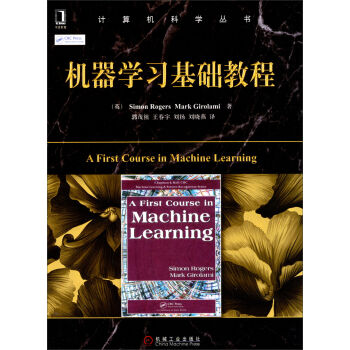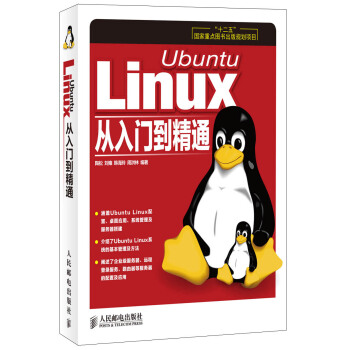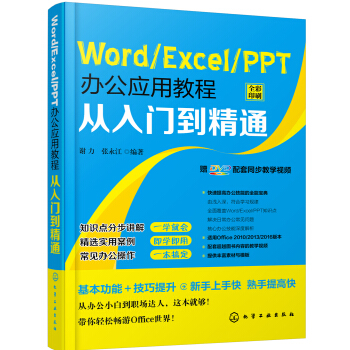![經典原版書庫:計算機網絡(英文版·第5版) [Computer Networks, Fifth Edition]](https://pic.tinynews.org/10854761/8d81a8b8-308f-4ac3-83ed-f40ba01706f8.jpg)

具體描述
編輯推薦
《經典原版書庫:計算機網絡(英文版·第5版)》是國內外使用廣泛的計算機網絡經典教材。全書自下而上係統地介紹瞭計算機網絡的基本原理,並給齣瞭大量實例。
海報:
內容簡介
《經典原版書庫:計算機網絡(英文版·第5版)》是全球具經典性的計算機網絡教材,我國各高等院校也廣泛采用此書作為計算機網絡課程的基本教材。Tanenbaum教授以高深的理論造詣和豐富的實踐經驗,在書中對計算機網絡的原理、結構、協議標準與應用等做瞭深入的分析與研究。全書按照網絡協議模型(物理層、數據鏈路層、介質訪問控製子層、網絡層、傳輸層和應用層)’自底嚮上逐層講述每一層所用的技術與協議標準,並給齣大量實例。全書內容全麵翔實,體係清晰閤理敘述由簡入繁、層層深入,自底嚮上方法也符閤人類從底層到高層的認識規律,因此是公認的適閤網絡入門的教材。
隨著計算機網絡的發展,本版對相關內容進行瞭大量修訂、更新和補充,具體更新內容如下:
●無綫網絡(802,12和802.16)。
●智能手機使用的3G網絡。
●RFID和傳感器網絡。
●使用CDN進行內容分發。
●對等網絡。
●實時媒體。
●網絡電話。
●延遲容忍網絡。
作者簡介
AndrewS.Tanenbaum,國際知名的計算機科學傢,著名的技術作傢、教育塚和研冤看,ACM和IEEE兩會高級會員,荷蘭皇傢藝術和科學院院士,荷蘭阿姆斯特丹Vrije大學計算機科學係教授。他講授計算機網絡、操作係統和計算機組成等課程30多年,教學成果卓著,其所著的多部計算機科學方麵的教材已成為該領域內的範本,得到學術界和教育界的廣泛認可,多次獲得ACM及其他學術組織頒發的各項榮譽,包括1994年ACMKarlV.Karlstrom傑齣教育奬、1997年ACM計算機科學教育傑齣貢獻奬、2002年Texty卓越教材奬、第10屆ACM操作係統原理研討會傑齣論文奬等,他還入選瞭《世界名人錄》。DavidJ.Wetherall擁有美國麻省理工學院計算機科學博士學位,現為華盛頓大學西雅圖分校計算機科學與工程係副教授。他的研究領域是網絡係統,尤其是無綫網絡和移動計算、網絡測量和Internet協議的設計、隱私和安全。
內頁插圖
目錄
PREFACEABOUT THE AUTHORS
1 INTRODUCTION
1.1 USES OF COMPUTER NETWORKS
1.1.1 Business Applications
1.1.2 Home Applications
1.1.3 Mobile Users
1.1.4 Social Issues
1.2 NETWORK HARDWARE
1.2.1 Personal Area Networks
1.2.2 Local Area Networks
1.2.3 Metropolitan Area Networks
1.2.4 Wide Area Networks
1.2.5 Internetworks
1.3 NETWORK SOFI'WARE
1.3.1 Protocol Hierarchies
1.3.2 Design Issues for the Layers
1.3.3 Connection-Oriented Versus Connectionless Service
1.3.4 Service Primitives
1.3.5 The Relationship of Services to Protocols
1.4 REFERENCE MODELS
1.4.1 The OSI Reference Model,
1.4.2 The TCP/IP Reference Model
1.4.3 The Model Used in This Book
1.4.4 A Comparison of the OSI and TCP/IP Reference Models
1.4.5 A Critique of the OSI Model and Protocols
1.4.6 A Critique of the TCP/IP Reference Model
1.5 EXAMPLE NETWORKS
1.5,1 The Internet
1.5.2 Third-Generation Mobile Phone Networks
1.5.3 Wireless LANs: 802.11
1.5.4 RFID and Sensor Networks
1.6 NETWORK STANDARDIZATION
1.6,1 Who's Who in the Telecommunications World
1.6.2 Who's Who in the International Standards World
1.6.3 Who's Who in the Internet Standards World
1.7 METRIC UNITS
1.8 OUTLINE OF THE REST OF THE BOOK
1.9 SUMMARY
2 THE PHYSICAL LAYER
2.1 THE THEORETICAL BASIS FOR DATA COMMUNICATION
2.1.1 Fourier Analysis
2.1.2 Bandwidth-Limited Signals
2.1.3 The Maximum Data Rate of a Channel
2.2 GUIDED TRANSMISSION MEDIA
2.2.1 Magnetic Media
2.2.2 Twisted Pairs
2,2.3 Coaxial Cable
2.2.4 Power Lines
2.2.5 Fiber Optics
2.3 WIRELESS TRANSMISSION
2.3.1 The Electromagnetic Spectrum
2.3.2 Radio Transmission
2.3.3 Microwave Transmission
2.3.4 Infrared Transmission
2.3.5 Light Transmission
……
3 THE DATA LINK LAYER
4 THE MEDIUM ACCESS CONTROL SUBLAYER
5 THE NETWORK LAYER
6 THE TRANSPORT LAYER
7 THE APPLICATION LAYER
8 NETWORK SECURITY
9 READING LIST AND BIBLIOGRAPHY
精彩書摘
Before we start to examine the technical issues in detail, it is worth devotingsome time to pointing out why people are interested in computer networks andwhat they can be used for.After all, if nobody were interested in computer net-works,few of them would be built. We will start with traditional uses at com-panies,then move on to home networking and recent developments regardingmobile users, and finish with social issues.1.1.1 usiness Applications Most companies have a substantial number of computers. For example, acompany may have a computer for each worker and use them to design products,write brochures, and do the payroll.Initially, some of these computers may haveworked in isolation from the others, but at some point, management may havedecided to connect them to be able to distribute information throughout the com-pany.……
前言/序言
PREFACE
This book is now in its fifth edition. Each edition has corresponded to a different phase in the way computer networks were used. When the first edition appearedin 1980, networks were an academic curiosity. When the second edition appeared in 1988, networks were used by universities and large businesses. When the third edition appeared in 1996, computer networks, especially the Internet, had become a daily reality for millions of people. By the fourth edition, in 2003, wireless networks and mobile computers had become commonplace for accessing the Web and the Internet. Now, in the fifth edition, networks are about content distribution(especially videos using CDNs and peer-to-peer networks) and mobile phones are small computers on the Internet.
Among the many changes in this book, the most important one is the addition f Prof. David J. Wetheall as a co-author. David brings a rich background in networking,having cut his teeth designing metropolitan-area networks more than 20years ago. He has worked with the Internet and wireless networks ever since and is a professor at the University of Washington, where he has been teaching and doing research on computer networks and related topics for the past decade.
Of course, the book also has many changes to keep up with the: ever-changing world of computer networks. Among these are revised and new material on Wireless networks (802.12 and 802.16)
The 3G networks used by smart phones
RFID and sensor networks
Content distribution using CDNs
Peer-to-peer networks
Real-time media (from stored, streaming, and live sources)
Internet telephony (voice over IP)
Delay-tolerant networks
A more detailed chapter-by-chapter list follows.
Chapter 1 has the same introductory function as in the fourth edition, but the contents have been revised and brought up to date. The Internet, mobile phone networks, 802.11, and RFID and sensor networks are discussed as examples of computer networks. Material on the original Ethernet—with its vampire taps—has been removed, along with the material on ATM.
Chapter 2, which covers the physical layer, has expanded coverage of digital modulation (including OFDM as widely used in wireless networks) and 3G networks (based on CDMA). New technologies are discussed, including Fiber to the Home and power-line networking.
Chapter 3, on point-to-point links, has been improved in two ways. The material on codes for error detection and correction has been updated, and also includes a brief description of the modern codes that are important in practice (e.g., convolutional and LDPC codes). The examples of protocols now use Packet over SONET and ADSL. Sadly, the material on protocol verification has been removed as it is little used.
In Chapter 4, on the MAC sublayer, the principles are timeless but the technologies have changed. Sections on the example networks have been redone accordingly, including gigabit Ethernet, 802.11, 802.16, Bluetooth, and RFID.
Also updated is the coverage of LAN switching, including VLANs.
Chapter 5, on the network layer, covers the same ground as in the fourth edition.
. The revisions have been to update material and add depth, particularly for quality of service (relevant for real-time media) and internetworking. The sections on BGP, OSPF and CIDR have been expanded, as has the treatment of multicast routing. Anycast routing is now included.
Chapter 6, on the transport layer, has had material added, revised, and removed.
New material describes delay-tolerant networking and congestion control in general. The revised material updates and expands the coverage of TCP congestion control. The material removed described connection-oriented network layers, something rarely seen any more.
Chapter 7, on applications, has also been updated and enlarged. While material on DNS and email is similar to that in the fourth edition, in the past few years there have been many developments in the use of the Web, streaming media and content delivery. Accordingly, sections on the Web and streaming media have been brought up to date. A new section covers content distribution, including CDNs and peer-to-peer networks.
Chapter 8, on security, still covers both symmetric and public-key cryptography for confidentiality and authenticity. Material on the techniques used in practice, including firewalls and VPNs, has been updated, with new material on 802.11 security and Kerberos V5 added.
Chapter 9 contains a renewed list of suggested readings and a comprehensive bibliography of over 300 citations to the current literature. More than half of these are to papers and books written in 2000 or later, and the rest are citations to classic papers.
Computer books are full of acronyms. This one is no exception. By the time you are finished reading this one, the following should ring a bell: ADSL, AES, AJAX, AODV, AP, ARP, ARQ, AS, BGP, BOC, CDMA, CDN, CGI, CIDR, CRL, CSMA, CSS, DCT, DES, DHCP, DHT, DIFS, DMCA, DMT, DMZ, DNS,DOCSIS, DOM, DSLAM, DTN, FCFS, FDD, FDDI, FDM, FEC, FIFO, FSK,FTP, GPRS, GSM, HDTV, HFC, HMAC, HTTP, IAB, ICANN, ICMP, IDEA,IETF, IMAP, IMP, IP, IPTV, IRTF, ISO, ISP, ITU, JPEG, JSP, JVM, LAN,LATA, LEC, LEO, LLC, LSR, LTE, MAN, MFJ, MIME, MPEG, MPLS, MSC,MTSO, MTU, NAP, NAT, NRZ, NSAP, OFDM, OSI, OSPF, PAWS, PCM, PGP,PIM, PKI, POP, POTS, PPP, PSTN, QAM, QPSK, RED, RFC, RFID, RPC, RSA,RTSP, SHA, SIP, SMTP, SNR, SOAP, SONET, SPE, SSL, TCP, TDD, TDM,TSAP, UDP, UMTS, URL, VLAN, VSAT, WAN, WDM, and XML. But don’t worry. Each will appear in and be carefully defined before it is used. As a fun test, see how many you can identify before reading the book, write the number in the margin, then try again after reading the book.
To help instructors use this book as a text for courses ranging in length from quarters to semesters, we have structured the chapters into core and optional material.
The sections marked with a ‘‘*’’ in the table of contents are the optional ones. If a major section (e.g., 2.7) is so marked, all of its subsections are optional.
They provide material on network technologies that is useful but can be omitted from a short course without loss of continuity. Of course, students should be encouraged to read those sections as well, to the extent they have time, as all the material is up to date and of value.
The following protected instructors’ resource materials are available on the publisher’s Web site at . For a username and password, please contact your local Pearson representative.
Solutions manual
PowerPoint lecture slides
Resources for students are available through the open-access Companion Web site link on , including Web resources, links to tutorials, organizations, FAQs, and more Figures, tables, and programs from the book Steganography demo Protocol simulators
Many people helped us during the course of the fifth edition. We would especially like to thank Emmanuel Agu (Worcester Polytechnic Institute), Yoris Au (University of Texas at Antonio), Nikhil Bhargava (Aircom International, Inc.),Michael Buettner (University of Washington), John Day (Boston University),Kevin Fall (Intel Labs), Ronald Fulle (Rochester Institute of Technology), Ben Greenstein (Intel Labs), Daniel Halperin (University of Washington), Bob Kinicki (Worcester Polytechnic Institute), Tadayoshi Kohno (University of Washington),Sarvish Kulkarni (Villanova University), Hank Levy (University of Washington),Ratul Mahajan (Microsoft Research), Craig Partridge (BBN), Michael Piatek (University of Washington), Joshua Smith (Intel Labs), Neil Spring (University of Maryland), David Teneyuca (University of Texas at Antonio), Tammy VanDegrift (University of Portland), and Bo Yuan (Rochester Institute of Technology),for providing ideas and feedback. Melody Kadenko and Julie Svendsen provided administrative support to David.
Shivakant Mishra (University of Colorado at Boulder) and Paul Nagin (Chimborazo
Publishing, Inc.) thought of many new and challenging end-of-chapter problems. Our editor at Pearson, Tracy Dunkelberger, was her usual helpful self in many ways large and small. Melinda Haggerty and Jeff Holcomb did a good job of keeping things running smoothly. Steve Armstrong (LeTourneau University) prepared the PowerPoint slides. Stephen Turner (University of Michigan at Flint) artfully revised the Web resources and the simulators that accompany the text. Our copyeditor, Rachel Head, is an odd hybrid: she has the eye of an eagle and the memory of an elephant. After reading all her corrections, both of us wondered how we ever made it past third grade.
Finally, we come to the most important people. Suzanne has been through this 19 times now and still has endless patience and love. Barbara and Marvin now know the difference between good textbooks and bad ones and are always an inspiration to produce good ones. Daniel and Matilde are welcome additions to our family. Aron is unlikely to read this book soon, but he likes the nice pictures on page 884 (AST). Katrin and Lucy provided endless support and always managed to keep a smile on my face.
Thank you (DJW).
ANDREW S. TANENBAUM
DAVID J.WETHERALL
用戶評價
這本書的封麵設計就給我一種沉靜而專業的感受,深邃的藍色背景搭配簡潔明瞭的標題,一下子就抓住瞭我的眼球。作為一個對計算機網絡領域充滿好奇的初學者,我一直希望能找到一本能夠係統講解網絡基礎知識的權威教材。在翻閱瞭市麵上不少書籍後,這本《計算機網絡》(英文版·第5版)以其經典的名號吸引瞭我。我特彆看重的是它的“原版”屬性,相信它能更真實地傳遞作者最原始的思考和最嚴謹的論證,避免瞭二次翻譯中可能齣現的理解偏差或信息失真。雖然我還沒有開始深入閱讀,但僅從其厚重的體量和一絲不苟的排版,我就預感這會是一次充實的學習旅程。我期待它能夠從最基礎的概念講起,循序漸進地引導我理解TCP/IP協議棧的精髓,掌握各種網絡設備的原理,以及深入瞭解數據傳輸的底層機製。我對其中可能涉及到的經典案例和前沿技術展望尤為期待,希望它能為我構建一個堅實的理論基礎,也為我未來在網絡安全、分布式係統等相關領域的探索打下良好的開端。
評分當我看到這本書的書名時,一種熟悉感油然而生。我知道“計算機網絡”是計算機科學中一個至關重要的組成部分,而“經典原版書庫”則保證瞭其內容的權威性和深度。我一直認為,學習計算機技術,尤其是像網絡這樣基礎且廣泛的學科,繞不開那些被時間檢驗過的經典著作。雖然我還沒有開始翻閱,但我可以想象這本書的語言一定是精煉而準確的,它的邏輯一定是嚴謹而清晰的。我希望它能幫助我建立起一個完整的計算機網絡知識框架,從物理層到應用層,每一個環節都能夠被細緻地闡述。我特彆期待能夠深入理解OSI七層模型和TCP/IP四層模型之間的關係和區彆,以及各種核心協議(如HTTP, FTP, DNS, TCP, UDP, IP)的工作機製。對於我來說,這本書不僅僅是學習工具,更像是一次與領域內大師的對話,一次對網絡世界奧秘的探索之旅。
評分作為一名對技術充滿熱情的業餘愛好者,我一直在尋找能夠係統提升自己網絡知識水平的資源。這本《計算機網絡》(英文版·第5版)的齣現,無疑正中我的下懷。我非常喜歡英文原版的書籍,因為它們能最直接地傳遞作者的思想,並且在專業術語的翻譯和理解上,原版往往是最準確的。我對這本書的“經典”二字非常看重,這意味著它不僅僅是一本教材,更是一部可以反復研讀、從中汲取智慧的寶藏。我期待它能夠帶領我深入瞭解網絡的各個層麵,包括但不僅限於各種數據傳輸協議的原理、路由選擇的算法、擁塞控製的機製,以及網絡安全的基本概念。我希望能通過這本書,能夠更好地理解互聯網是如何運作的,並且能夠為自己搭建一些小型的網絡實驗,比如配置路由器、模擬網絡拓撲等。我相信這本書能夠為我的學習和實踐提供堅實的理論指導,讓我對網絡世界的理解更上一層樓。
評分坦白說,我選擇這本書很大程度上是因為它“經典”的名頭,以及它在計算機網絡領域長期以來積纍的聲譽。作為一名有一定工作經驗的從業者,我深知理論基礎的重要性。我曾經在處理一些復雜的網絡問題時,感到力不從心,原因就是缺乏對底層原理的深刻理解。這本書的第五版,意味著它已經經過瞭幾代的迭代和完善,內容上應該是非常成熟和全麵的。我特彆感興趣的是它如何處理當前快速發展的網絡技術,比如雲計算、物聯網、5G等,是否能提供一個清晰的視角來理解這些新技術的網絡支撐。我希望這本書能夠幫助我梳理現有的知識體係,填補那些模糊不清的知識盲點,並且能夠提供一些前瞻性的指導,讓我能夠更好地適應未來的技術發展趨勢。我對其中可能包含的大量圖示和案例分析抱有很高的期望,因為這有助於我更直觀地理解抽象的概念。
評分從我個人的閱讀習慣來說,我更偏愛那種能夠引發思考、激發探索的書籍。這本書的標題“經典原版書庫”本身就蘊含著一種曆史的沉澱和學術的嚴謹,這讓我對它的內容質量充滿瞭信心。我一直認為,要真正理解一個領域,就必須迴溯其發展的源頭,學習那些奠定基石的經典著作。這本《計算機網絡》(英文版·第5版)無疑扮演瞭這樣的角色。雖然我不是計算機專業的學生,但工作以來接觸到的各種與網絡相關的問題,促使我下定決心要係統性地學習。我希望這本書不僅僅是知識的堆砌,更能提供一種解決問題的思路和分析框架。例如,在學習網絡協議時,我希望它能清晰地解釋為什麼會有這樣的設計,它解決瞭哪些現實中的挑戰。我也希望能從中學習到一些評估網絡性能、診斷網絡故障的方法論。總而言之,我期待它能夠以一種啓發式的方式,讓我不僅“知道”是什麼,更能“理解”為什麼,從而真正掌握計算機網絡的精髓,並在實際工作中舉一反三。
評分計算機網絡的經典書籍呀!第四版用瞭十年,終於等來瞭第五版,經典中的經典,果斷收藏,再次迴顧。
評分好厚的一本,沒辦法給留學生用。
評分想瞭解相關內容的朋友可以買來一讀
評分書籍挺新的,正版,總體挺滿意的!
評分經典好書,印刷質量不錯,需要慢慢讀
評分紙張特彆好,字體也特彆清晰這本書很值得
評分驚喜驚喜地都哦空洞洞豆豆哦係xoxo
評分還不錯,用來學習的,剛好可以用得上
評分看不懂⊙﹏⊙
相關圖書
本站所有内容均为互联网搜索引擎提供的公开搜索信息,本站不存储任何数据与内容,任何内容与数据均与本站无关,如有需要请联系相关搜索引擎包括但不限于百度,google,bing,sogou 等
© 2025 book.tinynews.org All Rights Reserved. 静思书屋 版权所有

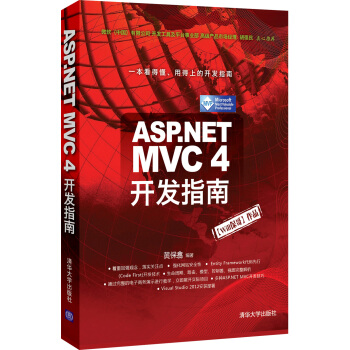
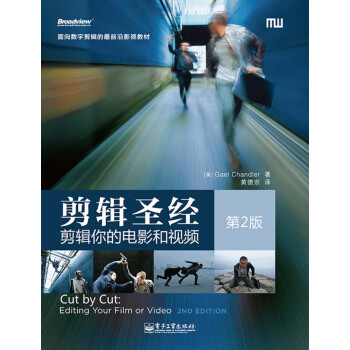
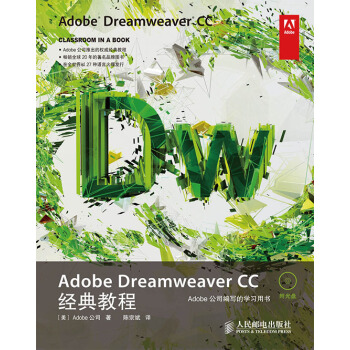
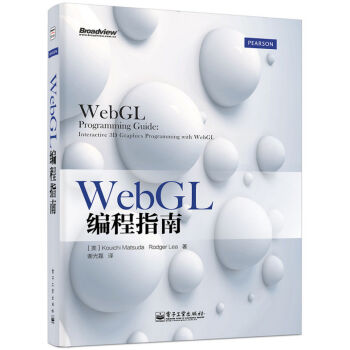
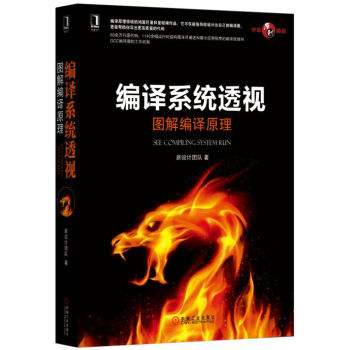

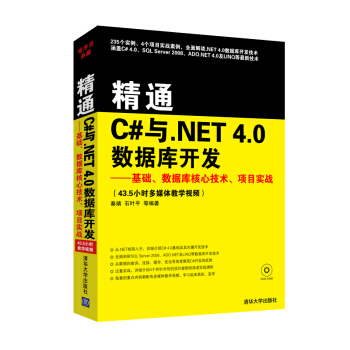
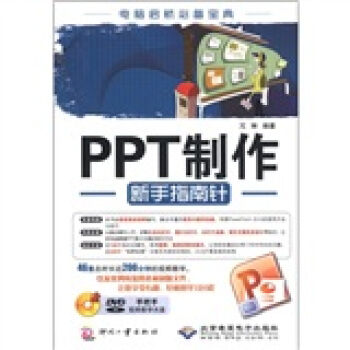
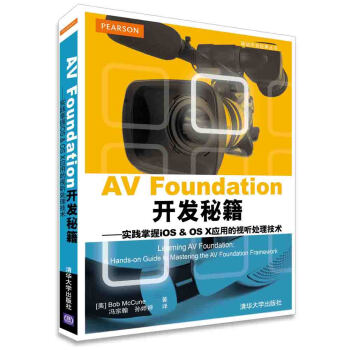
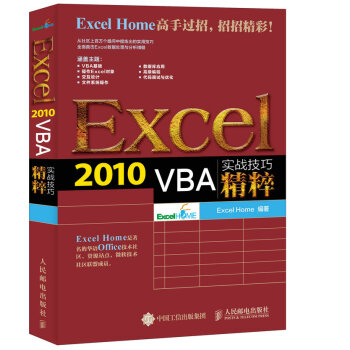
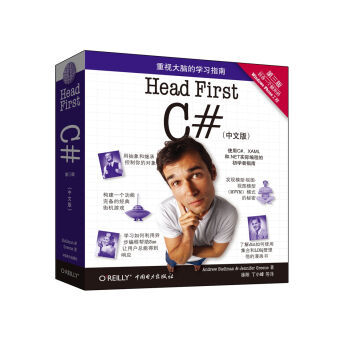

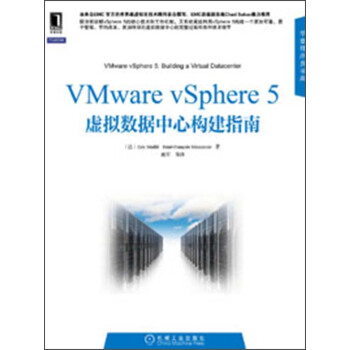
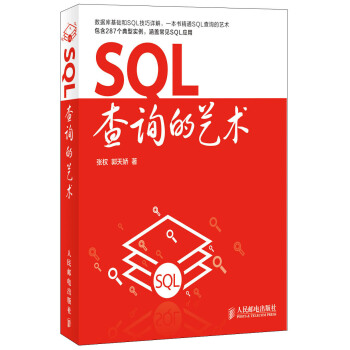
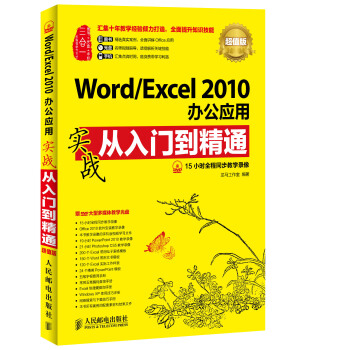
![HTML5移動Web開發實戰 [HTML5 Mobile Development Cookbook] pdf epub mobi 電子書 下載](https://pic.tinynews.org/11241807/rBEhVVGyyF8IAAAAAAU1S9S3sREAAAFegAu-xkABTVj221.jpg)
